
the MAM: greek monsters
RETURN TO MYTH ABOUT MYTHS PAGE
Monsters and beasts were a big source of explanation, devastation and heroism in ancient times. With their great imaginations, folks of the past came up with glorious monsters of many animal-like features, giant tyrannical sizes and wild motives. They also created more subtle machinations of various calm beasts with man-eating tendencies.
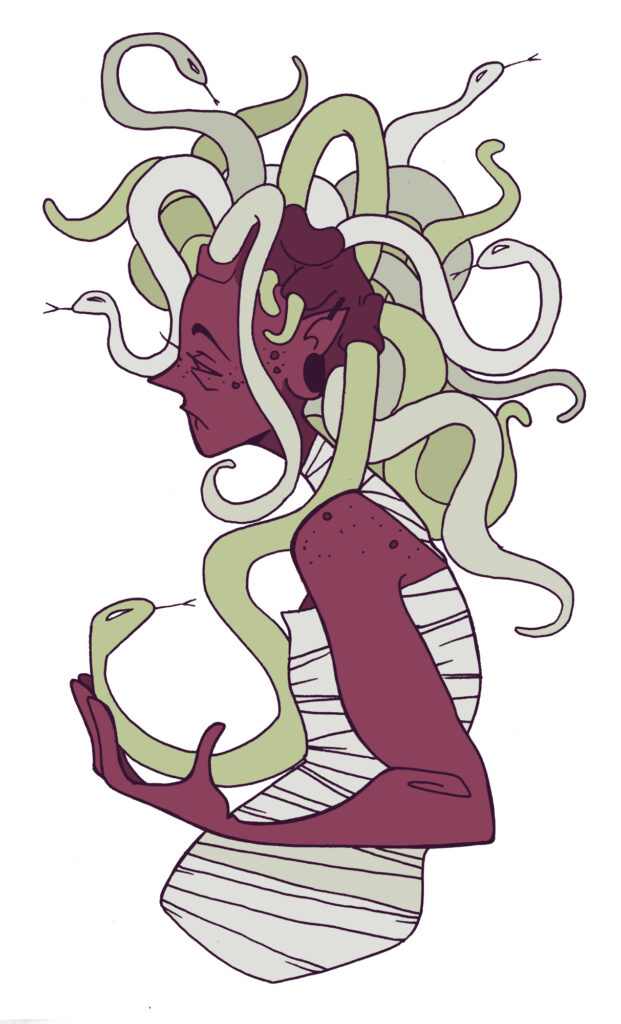
medousa & Gorgons
(MEDUSA)
Best known for having a gaze that turned mortals to stone and snakes for hair.
In some versions of the myth, Medousa was a monster baby whose origin seemed to determine the severity of the punishment in her story. In some versions she was either the offspring of Ekhidna or two sea-Titans: Phorkys and Keto. In the myths in which she was born a monster (and not turned a monster) she had two sisters and the three of them lived together in a cave in which Perseus slew Medousa in her sleep only to be chased by her sisters afterward.
In the second version, Medousa was once considered the most beautiful woman who unfortunately became the prize of Poseidon who ravished her in Athena’s temple. This caused Athena to be absolutely livid and seeing as the second-generation goddess could not punish her uncle, Poseidon, she punished Medousa turning her into a hideous creature with eyes that could turn people into stone. She was eventually defeated by Perseus in a much more glorified fashion in which he fought against her with gifts given to him by the gods. Not only this but her head afterward was used as a weapon for a great deal of time before Perseus handed Medousa’s head to Athena who affixed it to her shield.
(GORGON/GORGO/GORGONES
Best known for being powerful winged daimon with snakes for hair.
In some versions of the myth, the gorgons consisted of three sisters: Medousa, Sthenno and Eurytale and were all said to be winged and had snakes for hair. It was also said that of the three of them, only Medousa was mortal.
Their origin was not one very many myth tellers seemed capable of agreeing upon. In some versions they were the children of Ekidna who either had them of her own accord or with the help of the Typhos. In another instance they were known as the offspring of Phorkys and Keto, two sea deities.
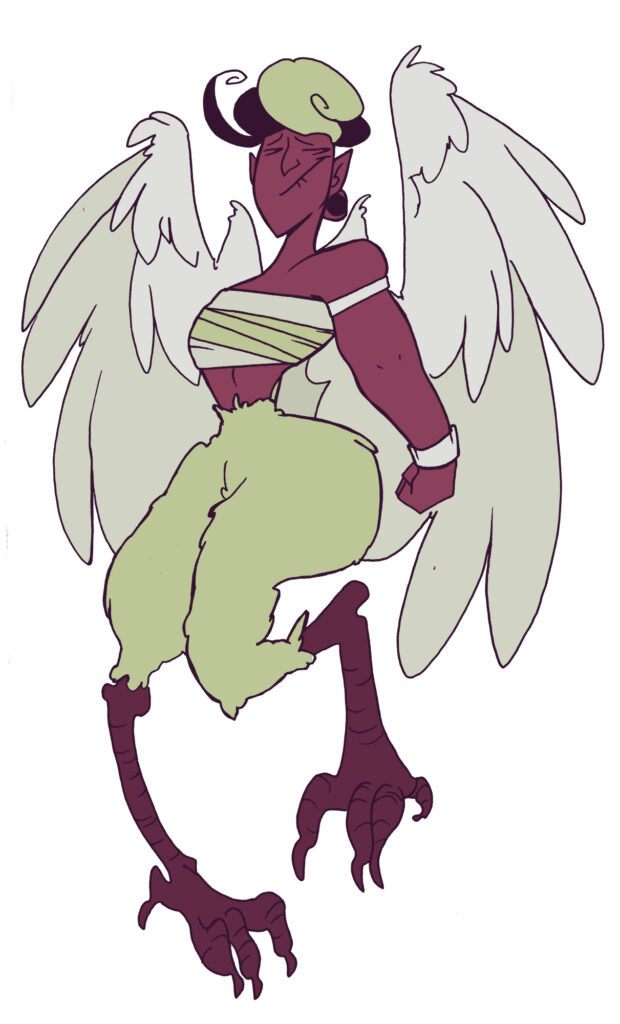
aello & Harpies & sirens
(AELLO/AELLOPUS/AELLOPE/PODARGE/PODARCE/NICOTHOE)
Best known for being a troublesome harpy.
In some versions of the myth it was said that a half bird, half woman monster was known to abduct individuals who had wronged and torture them the entire way to Tartaros. While Aello was name-dropped as a harpy participating in these acts she was not exactly differentiated all too much from her sisters whose names were often rather interchangeable. Names mentioned belonging to harpy beasts included: Aello, Aellopos, Nikothoe, Kelaino, Podarke, Podarge, Thuella and Aella.
(HARPY/HARPYIA/HARPYIAI)
Best known for being half-woman, half-bird.
In some versions of the myth harpies were best known for their birdlike physical attributes, it was greatly noted they were also considered daimons and/or spirits as well. They were said to personify storm-winds, living primarily in the mountains with a wild temper. These monsters were quite ferocious in that they liked to pick apart their prey as they were bringing it back to Tartaros. Harpies were also known as ‘the hounds of Zeus’.
The most significant portrayal in mythology of a harpy was in the case of Zeus sending a flock of them to plague King Phineus as a punishment for revealing the secrets of the gods so any time food was set on his plate, a harpy would snatch it and gobble it up before he could. It was only the Argonauts who managed to chase them off for King Phineus.
(SIREN/SEIREN/SEIRENES/SEIRENI)
Best known for luring men astray with their song.
In some versions of the myth sirens were known as three monstrous sea-nymphs who also took a similar half-bird shape as harpies did, primarily because Demeter turned them this way to help in the search of Persephone when she went missing. Demeter never thought to change them back so they continued to appear in this manner, singing bewitching songs to lure sailors to their deaths.
Sirens appeared primarily on the coast and appeared in the Argonauts myth as well as the myth of Odysseus in which both heroes had to outsmart their hypnotic song so that they might pass through without harm.

argos
(ARGOS/ARGUS)
Best known for being a giant with a hundred eyes.
In some versions of the myth, Argos was one of the few creatures with a name containing a descriptor often designated to gods or titans. Argos’ name was often followed by ‘Panoptes’ which meant ‘all seeing and he was described as being a giant with one hundred eyes. Some ancients developed the saying: ‘eyes of Argos’ to mean that he all-seeing and would find out should one act in a poor manner. It was often a word of caution as one would bring on his fury should Argos’ all-seeing eyes catch individuals doing horrible things. His suffix, Panoptes was later taken by gods like Zeus when Argos was usurped by him.
In mythology itself, Argos took the role as a servant of Hera and that his eyes never fell asleep all at once. He slew Ekhidna and kept watch over the heifer (Io) meant to remained tethered to an olive tree away from Zeus’ insatiable lust. Argos was slain, Hermes having put all his eyes to sleep before doing so, at the request of Zeus himself.
It was also said that Argos was preserved in a fashion as the eyes on the tails of peacocks.

antiphates & laestrygonians
(ANTIPHATES/ANTIPHATUS)
Best known for being a giant man-eaters.
In some versions of the myth Antiphates was married and had a daughter and appears really only once in mythology in the myth of Odysseus in which the hero landed on his shores. Antiphates made a dastardly show of devouring one of Odysseus’s men and belting out a war-cry to make sure that he and the rest of his men were found and captured and done away with.
(LAESTRYGONIANS/LAESTRYGONES)
Antiphates was the leader/king of a tribe of man-eating giants known as the Laestrygonians. A ferocious race that resided on an island in relative tranquility until Odysseus arrived with his crew. It was apparent that at Antiphates’ word, the entire tribe went wild and aimed their destruction entirely upon the crew, spearing men like fish and destroying their ships so that only a few survivors managed to leave.
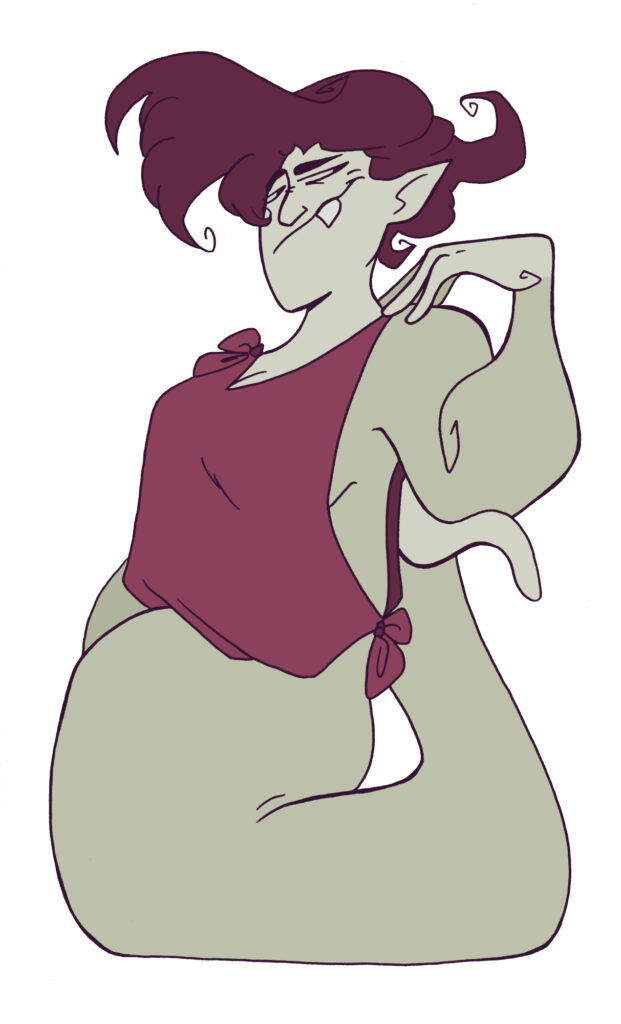
ekidna
(EKIDNA/ECHIDNA)
Best known for being the mother of all monsters.
In some versions of the myth she was said to be a gorgeous woman who was half human half snake, not a god, nor a mortal but all the while ageless and immortal. She was responsible for mothering various monster babies the most popular including: Chimera, Sphynx, Keberos and Medusa.
It was said that Ekidna also resided in a cave for the most part, keeping a sensible distance between the rest of the gods and their horrific children who killed her very own children. It was possible that this cave was also her mother Keto’s cave and was build very deep underground. In most versions Ekidna lived out her life happily preying on passers by and creating children with her husband, Typhon.
In other versions she was eventually slain by Argus Panoptes.
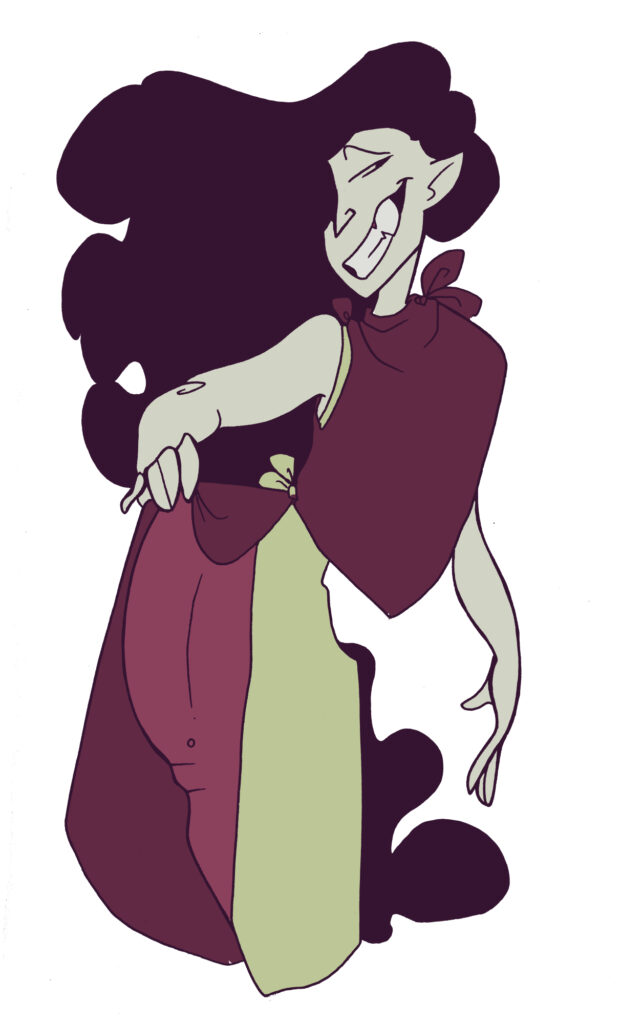
empousa
(EMPOUSA/EMPUSA/EMPUSAI)
Best known for being shapeshifter-women with a copper leg.
In some versions of the myth Empousa was either a single woman or a collective of women of the same vampiric nature. They were said to be commanded by Hekated and seduced young men in order to feed on them for sustenance. Sometimes these women were described as spectres or phantoms, although some much more modern writings describe Empousa as being quite similar to vampires (without the Catholic imagery and Holy weaknesses.
While mythology writers and tellers couldn’t quite decide whether Empousa were several, or a single dashing and monstrous young woman. They did, however, acknowledge that she was sometimes seen with a copper/donkey/ox or goat foot (this description… also varied depending on the teller of the story… actually, it seemed as though story tellers could hardly even decide on this fact either).
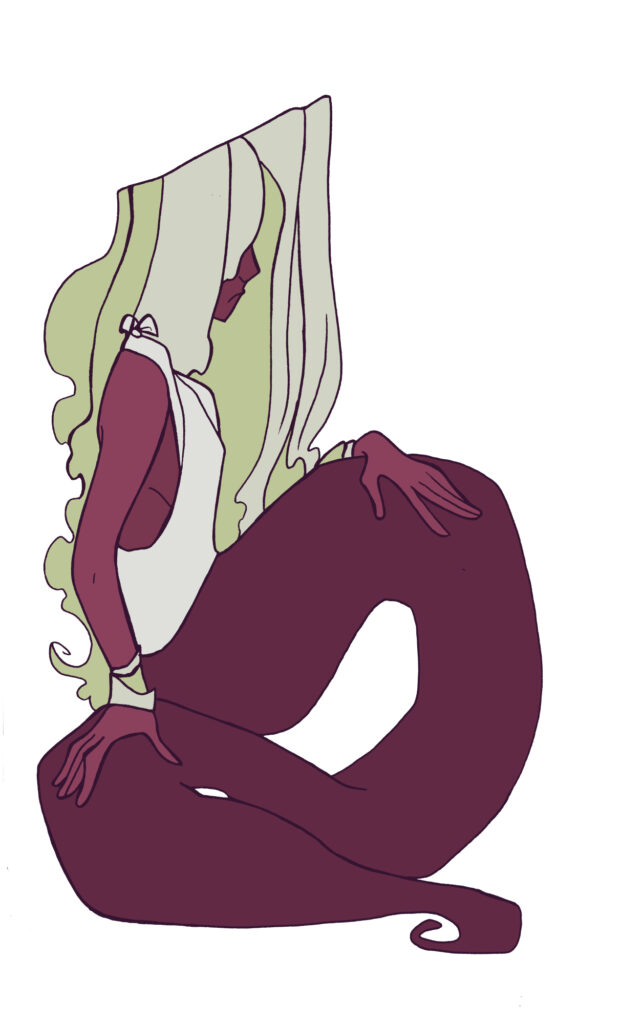
lamia
(LAMIA)
Best known for being a monstrous snake-woman.
In some versions of the myth, it was said that Lamia became an monstrous snake-like beast who ate children after Hera destroyed her own after Lamia slept with Zeus. In order to make this horror even more gruesome, Hera ensured that Lamia could no longer sleep so that she was forced to live with the pain days in and out.
Luckily enough, Zeus felt pity for Lamia and gave her the power to remove her own eyes as a reprieve which, admittedly was a rather horrid compromise. However, with the ability to remove her eyes came the ability to shape shift so that she could give herself a much more ‘seductress’ appeal.
Her name was also the ancient equivalent to the ‘bogeyman’ used to scare children into behaving as they should.
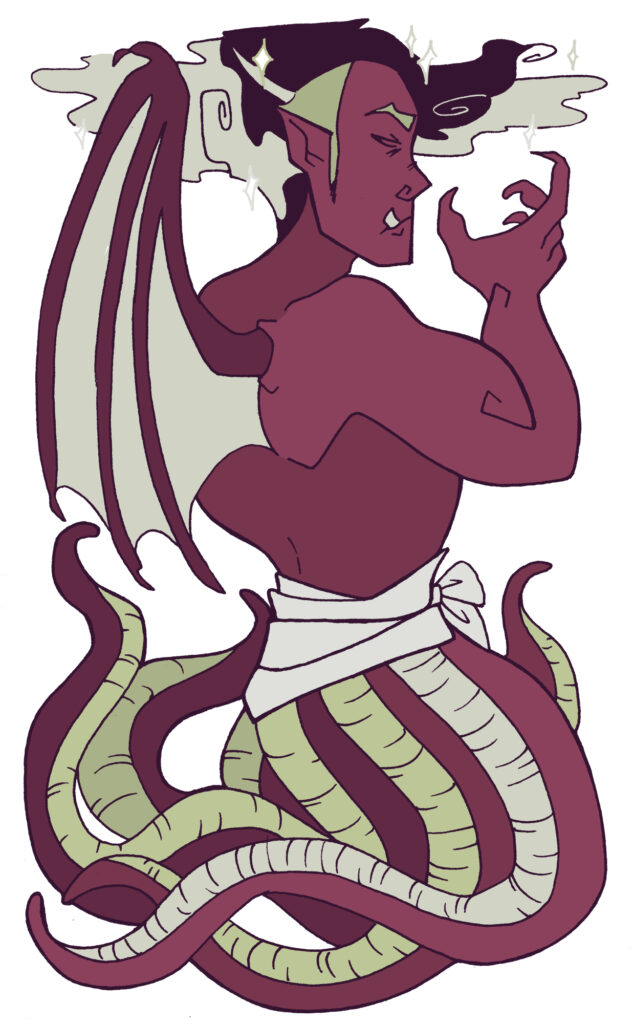
typhon
(TYPHON/TYPHOEUS/TYPHAEON/TYPHOS)
Best known for being the father of all monsters.
In some versions of the myth, Typhoeus and his monster-wife, Ekidna were parents to various monsters (those who were not created by the strange machinations of sea-gods, often some of the credit was shifted from Typhoeus and Ekidna to the most current god of the sea).
Typhon’s most important stint in mythology was his attempt to hold Gaia’s place as the ruler of the gods and defeat Zeus. Typhon was a part of this succession myth in which Gaia and Ouranos were overthrown by Kronus and Rhea who were eventually usurped by Zeus and Hera. Gaia, hoping to regain control, created this beast of a creature with Tartaros in order to stop Zeus’ reign and seize the throne for herself. This attempt was not successful and Typhon was tossed back into Tartaros (whence he came) as punishment.
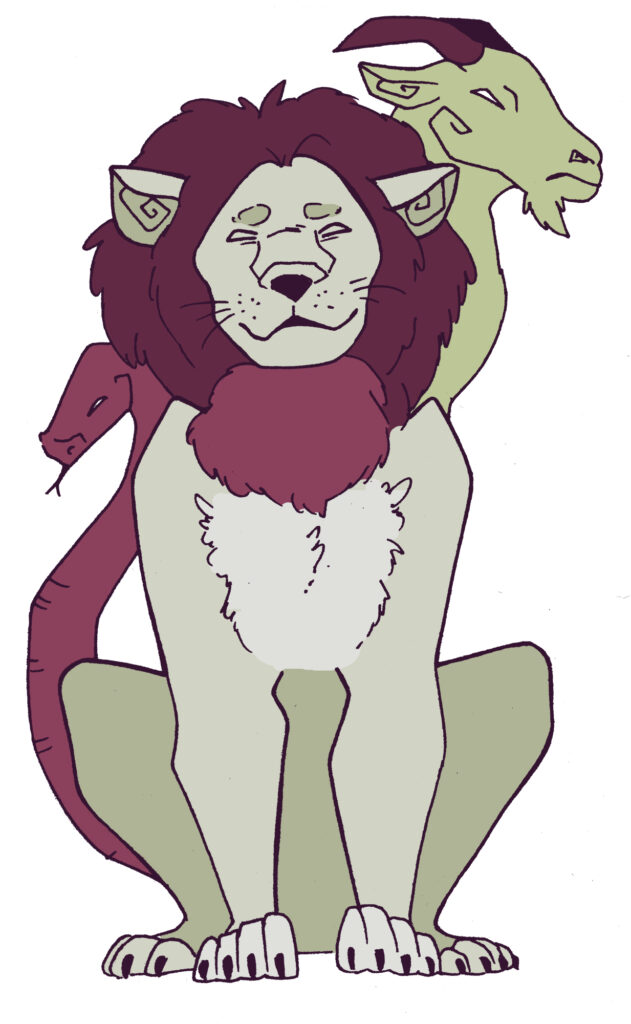
chimera
(CHIMERA/CHIMAERA)
Best known for being a beast composed of more than one animal.
In some versions of the myth this creature was essentially an omen for disaster. Admittedly this was no surprise considering the fact that it was composed of, at the very least, two predators. The Chimera’s snake-like tail and lion’s teeth and claws would have been enough to create ample amounts of destructive horrors. Not only this, but in addition to the sharp teeth and claws, the creature could even breathe fire.
Aside from this particularly famous version of a chimera straight from mythology itself (in Bellerophon’s myth), ‘Chimera’ soon became a term used to describe any creature fused with various different animals. Both later in myth and in more current stories.
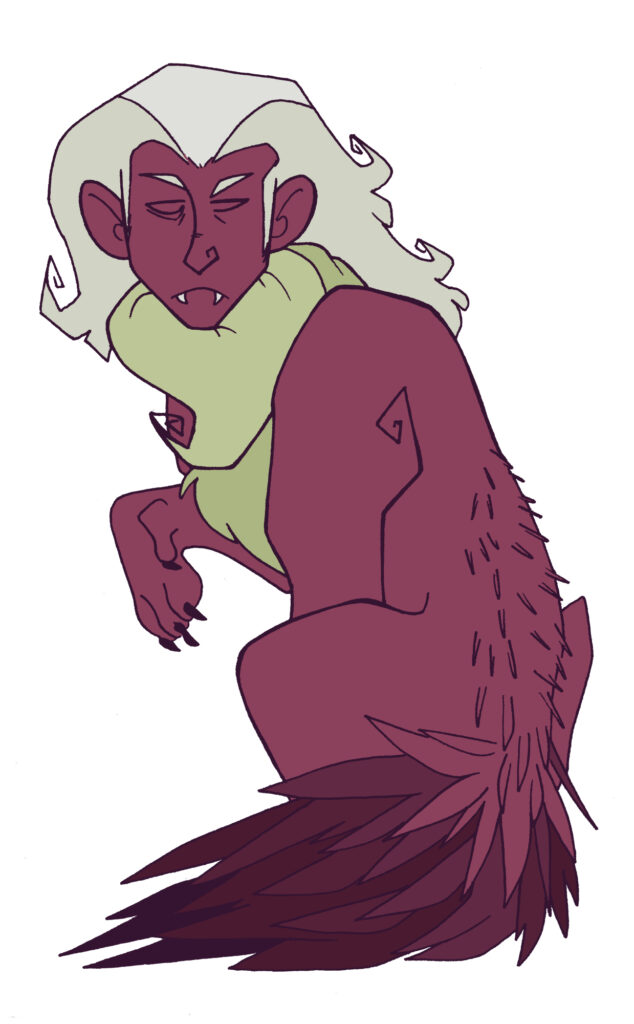
martikhoras
(MARTIKHORAS/ MARTIOKHORAS/ MARTICHORA/ MARTICORE/MANTICORE/ANDROPHAGOS/ANDROPHAGUS)
Best known for having the face of a man body of a lion and a tail that shot spikes.
In some versions of the myth this creature was a Persian monster whose name meant ‘man-eater’. While mentioned as a beast to kill within Greek Mythology, in quick passing, this creature’s origin was one that dated to a time quite a deal before this one and a difficult origin to pin down. Various newer renditions of mythology place it as one of Herakles’ labours so perhaps this may have been a fleeting version of Herakles’ story. All versions aside, a single quality remained the same: it was said that this creature’s spikes could spear a man straight through the heart with little to no effort and this was most certainly nothing to scoff at.
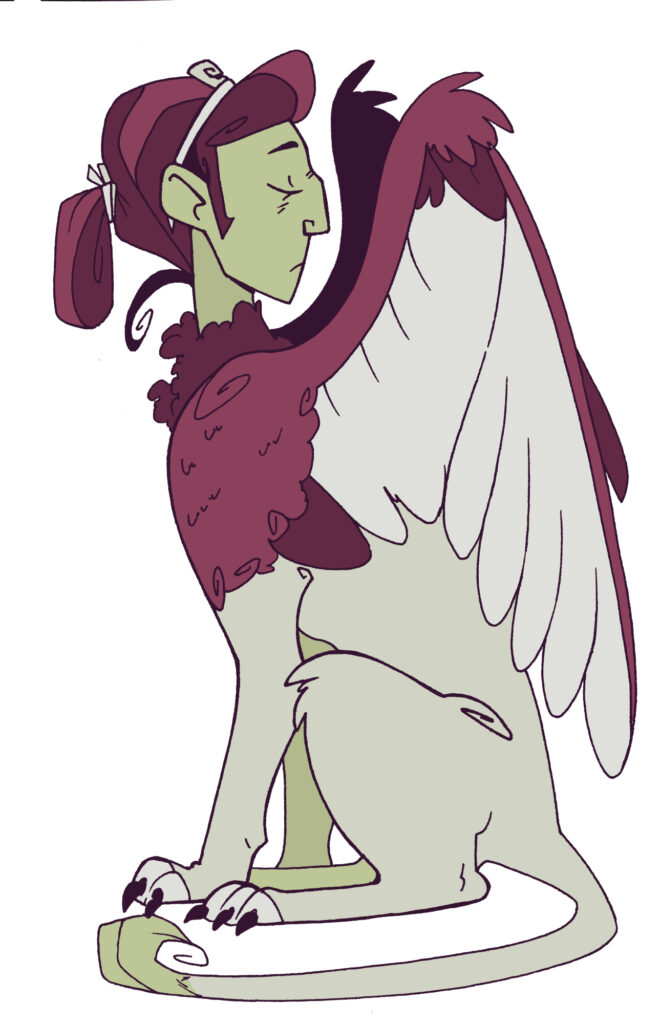
sphynx
(SPHINX/SPHYNX/SPHINGE)
Best known for having the head of a human and the haunches of a lion.
In some versions of the myth this creature was said to be a guardian and protector with great strength and power. The Sphynx, however wasn’t too brutal a beast, should the adventurer or hero solve their riddle all was well and the Sphynx sought no reason to harm them. Should the individual get this riddle wrong? The Sphynx showed no mercy in devouring this hero.
Interestingly enough, Sphinxes in Greek Mythology veered towards mean and ferocious and were typically women whereas their Egyptian counterparts were typically men and while ferocious and powerful; were also considered rather benevolent.
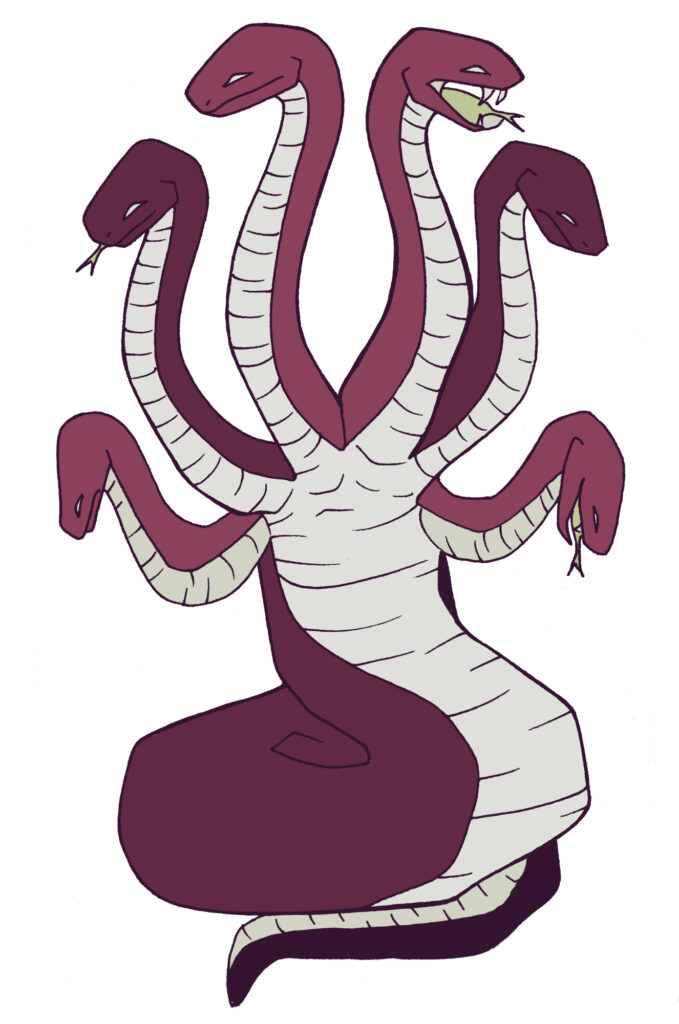
hydra & DRAGONS
(HYDRA/LERNAEAN HYDRA)
Best known for being the dragon whose heads regenerated when they were cut off.
In some versions of the myth this beast was said to have many heads before tellers of myth finally decided upon the most current rendition in which the Hydra was a serpentine creature that could regenerate two head at every one head that was cut off.
The most famous myth of this creature involved its defeat against Herakles and his nephew Iolaos by cauterizing the wound after the head was cut so the creature could not regenerate extra heads. Aside from this mention, the Hydra resided in the lake of Lerna which held one of the various secret entrances to the Underworld.
Dragons were another popular form of beast in Greek Mythology although they took on a more natural and serpent-like look without wing or limbs to really drive the idea home. In other cases, any creature with a snake-part was also loosely referred to as a dragon as well.
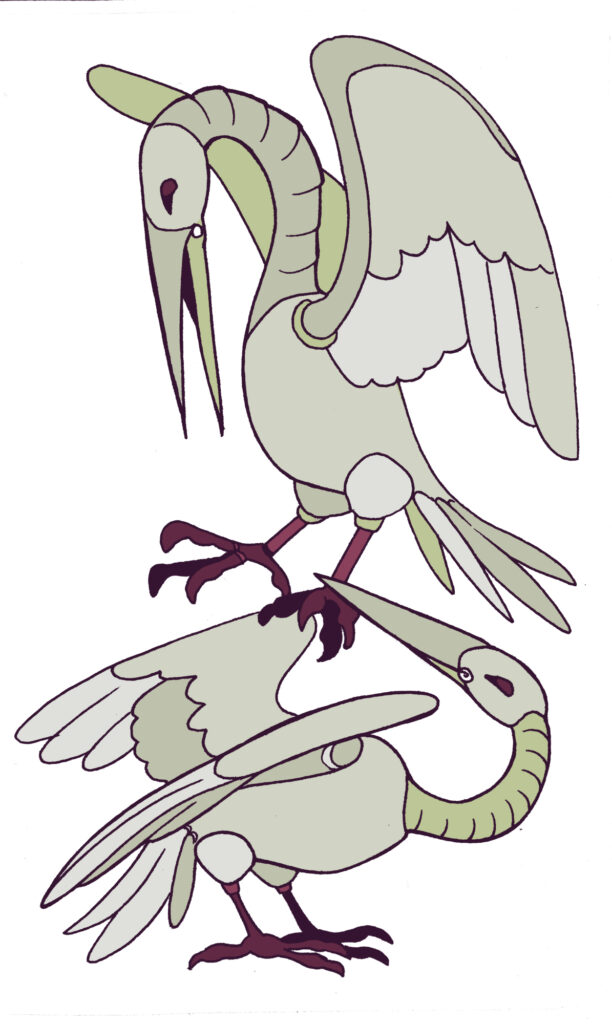
stymphalian Birds
(STYMPHALIAN BIRDS)
Best known for being giant metal birds.
In some versions of the myth these massive birds made of metal were most commonly known through the myth of the hero, Herakles as his sixth labour.
The Stymphalian Birds were bred by Artemis and raised by Ares and caused immense torment to country-side townspeople. By the time Herakles was set to destroy them, these birds were said to be man-eating birds with wings like blades that could be launched at their victims, beaks of bronze and… poisonous poop? It was safe to say that these creatures were quite a handful and it was to everyone’s great relief when Herakles appeared to destroy them and bring peace to the land.
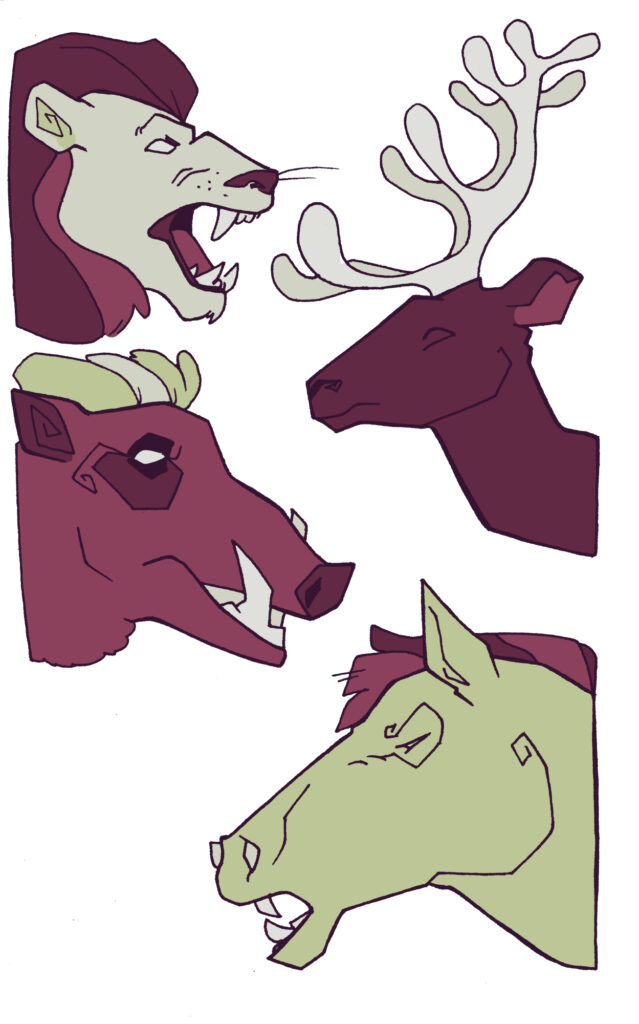
beasts
(NEMEAN LION/ NEMEOS LEON/ LEO NEMAEUS)
In some versions of the myth certain beasts were created as the labours of Herakles and while some beasts were dragons and Chimeras, others were Lions from a certain countryside with golden fur impenetrable by a human sword and claws sharper than a human blade. This creature was often known as the first Labour of Herakles and was defeated by shooting an arrow into its unprotected mouth. Herakles wore the Lion’s pelt as a shield after.
(CERYNEIAN HIND/CERYNITIS/GOLDEN HIND)
In some versions of the myth this Hind was said to be giant, had golden antlers like a stag and hooves of bronze or brass. It was said it could outrun an arrow and was really quite sacred to Artemis… which was why it became Herakles’ third labour, naturally. He wasn’t set to the task of killing this creature, no. His task was to capture it. After a year of chasing the creature, it was said either Herakles manage to hurt it or sought the help of Artemis who told him to stop running and consider his labour completed.
(ERYMANTHIAN BOAR)
In some versions of the myth, this creature was a massive wild boar that Herakles was set to capture in his fourth labour. Herakles sought out the help of Chiron who advised Herakles to capture it by having it get trapped in the snow. There wasn’t much describing the actual creature other than the fact that this boar was rather large and very wild.
(MARES OF DIOMEDES/MARES OF THRACE)
In some versions of the myth, the Mares of Thrace were a group of four man-eating horses. Each of these horses had a name: Podargos, Lampon, Xanthos, Deinos. Although majestic creatures they were considered rather wild and untamed due to their diet of human flesh. Herakle’s job was to steal them. Herakles brought another side kick who was eaten by the horses and in his revenge for his companion’s death, fed Diomedes (the owner of the mares) to his own man-eating horses.
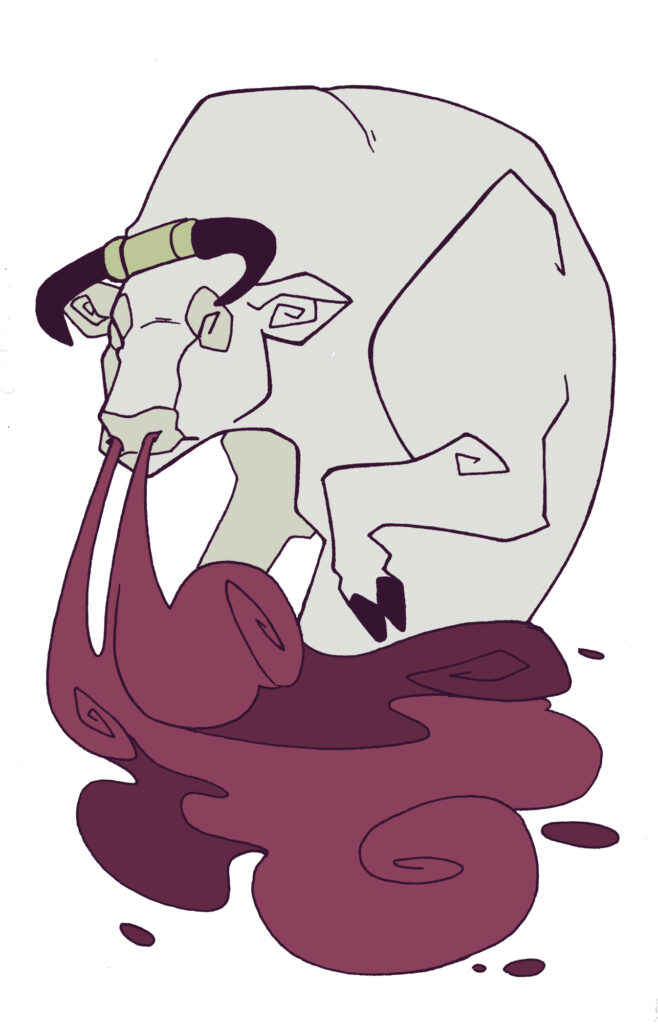
CRETAN BULL
(CRETAN BULL/WHITE BULL)
Best known for being a big white bull.
In some versions of the myth, there were quite a few myths involving a large white bull as a motif but two in particular that featured the very same bull.
The first of these was the myth of Pasiphae. This bull was allegedly sent by Poseidon to Crete so that it might be sacrificed to him at the hand of King Minos so that he could regain his right to rule. Unfortunately this beast of a bull was far too beautiful in Minos’ grand opinion and, instead, slaughtered a different bull in its place. His daughter (or wife in some cases) was cursed to fall in love with this bull and have its child: the minotaur.
The second instance in which this bull appeared in mythology was that this same particular bull was also the same bull found in Herakles’ seventh labour. Where it ran rampant throughout Crete and Herakles’ hand was ‘forced to kill it’.
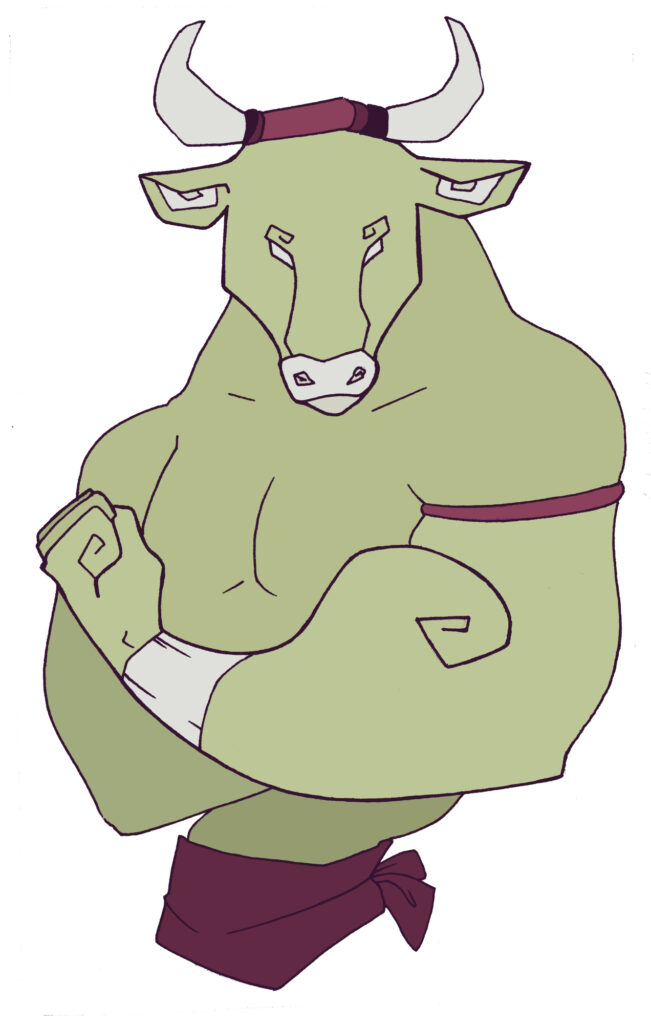
minotaur
(MINOTAUR/MINOTAURUS)
Best known for being half man half bull.
In some versions of the myth, this creature was birthed from a human mother (Pasiphae) and was the literal product of a bull and a person. Unfortunately, this creature was pretty ferocious and was imprisoned in a giant labyrinth for its own (and the rest of society’s safety). Nobody knew what to feed a bull that ate only men, and so King Minos took it as a sign from the gods and sacrificed young people to the labyrinth to be devoured by this beast. Eventually Theseus was made a sacrifice due to King Minos’ hold on on Athens at the time. This hero finally put this poor beast out of its misery having been trapped in a labyrinth its entire life.
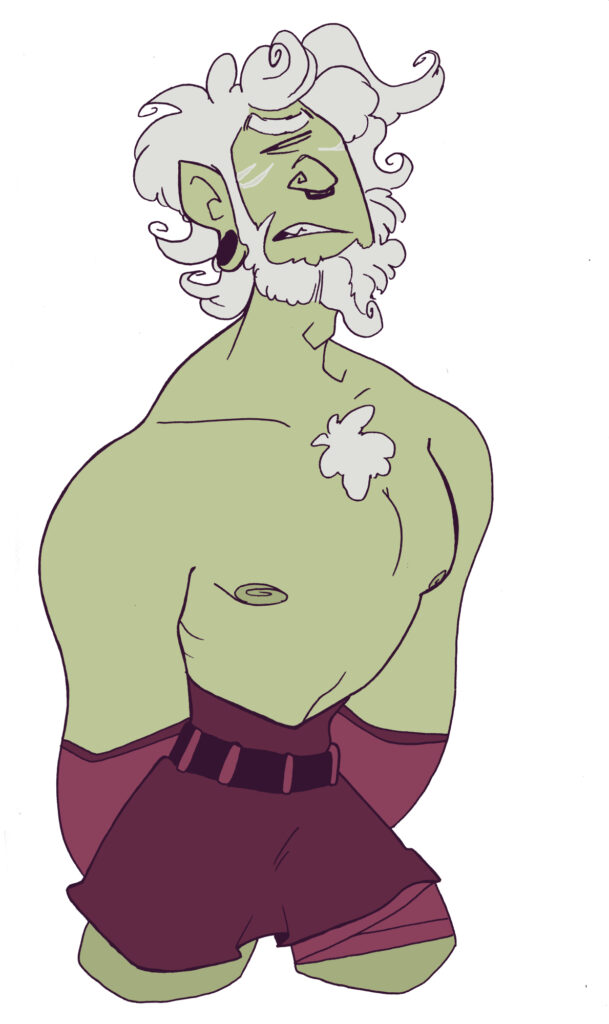
polyphemos
(POLYPHEMOS/POLYPHEMUS)
Best known for being a giant cyclopes.
In some versions of the myth, and the most popular version of Polyphemos’ myth, he was one of Odysseus’ enemies. Polyphemos was blissfully going about his daily life all fine and swell, when suddenly came to the realization that a slew of human travellers were living in his cave and, arguably eating his livestock for sustenance. Angered, the giant began eating this crew of human travellers. Unfortunately this crew belonged to Odysseus who, threatened, drove a stake into Polyphemos’ one good eye. Polyphemos demanded Odysseus’s name and the hero replied, ‘Nobody’. So now, as Polyphemos howled in pain, he called for help screaming about how ‘Nobody’ hurt him. Odysseus in the meantime, managed to sneak himself, and the rest of his crew off to their ship to escape.
Luckily in Odysseus’ hubris, the hero shouted his name back to the giant cyclopes in great laughter, not suspecting that Polyphemos’ father was actually Poseidon.

gegenee
(GEGENEES/ GEGENE/GEGEINES)
Best known for being six-armed giants.
In some versions of the myth the Gegenees were giants known to have six arms. Although they didn’t play a very large role in mythology, they did appear in the myth of Jason and his Argonauts. They lived on an island (assumingly quite peacefully) until the band of heroes appeared, destroying everything, starting a war, accidentally leaving Herakles behind who continued to fight these ‘horrid beasts’ before Jason remembered to return and save Herakles.
Quite commonly in myth relating to monsters, most especially giants, these creatures lived in relative peace with nothing but mere horrid rumours spread amongst humans about them.
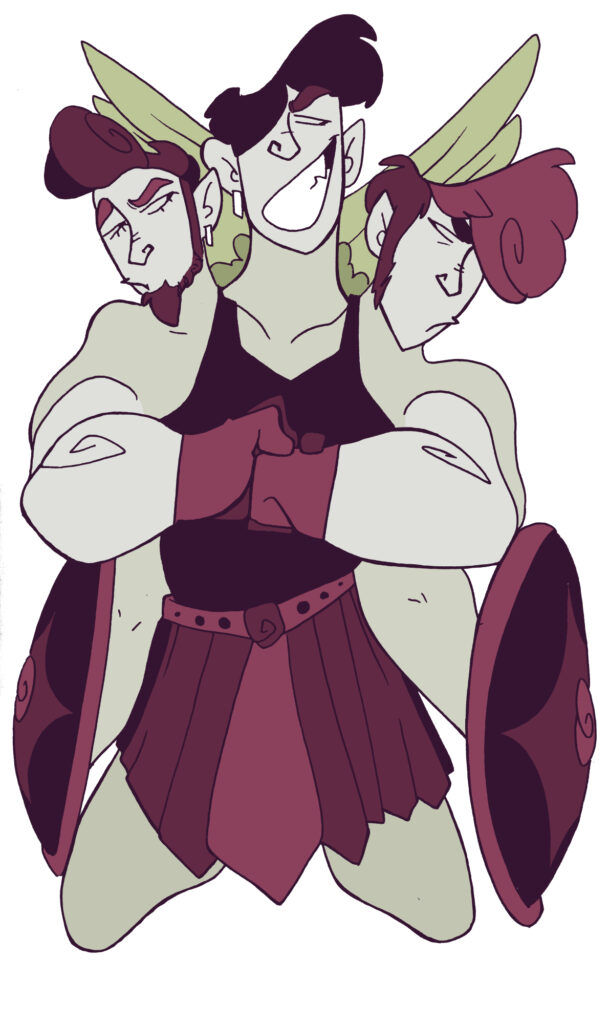
geryon
(GERYON/GERYONE)
Best known for being a giant who resided in the garden of the Hesperides.
In some versions of the myth, Geryon had, quite literally a million different looks for a million different occasions including: one body and three heads; three bodies and three heads; six hands, six feet and wings; six legs to match those six feet; three bodies joined to one pair of legs etc. While tellers of myth couldn’t quite decide on his appearance his dog was always the same: a two headed hound named Orthrus (Cerberus’ brother).
Despite all these many limbs and his very monstrous look (and monstrous-looking-hound) this guy was considered a warrior and was treated with at least that much respect. His only major role was as the villain in Herakles’ tenth labour where he was slain by the brutish hero who stole his cattle and also killed his dog.

phoenix
(PHOENIX)
Best known for being a bird made of flame that lived forever due to the process of rebirth.
In some versions of the myth it was said that these birds could live to be over a thousand years old before either spontaneously combusting into flames and re-birthing from the ashes of their previous life or dying and decomposing to give way to their next life. It was also said that the feathers of this bird either mimicked fire with red and yellow hues or, the purple dye from conch shells produced by folks who lived in Phoenicia (the city namesake). This bird was only mildly mentioned in mythology ironically enough, despite being quite an interesting creature.

kerberos
(KERBEROS/CERBERUS/HOUND OF HADES)
Best known for being the protective guard dog of the Underworld.
In some versions of the myth, Kerberos was possibly the most famously known dog. It was said that he was a dog with three heads and ferociously guarded the Underworld in order to prevent the dead from leaving.
In various mythology it was known that heroes had to be smart about getting around Kerberos all while respecting Hades and/or Kerberos enough not to ever harm it (if this was even a possibility).
Kerberos was most prominently featured as Herakles’ twelfth labour in which the hero was told to capture him as proof of his visitation to the Underworld. He was then quickly instructed to put Kerberos back where Herakles found him. Kerberos was one of the very few beasts Herakles did not kill and was instead challenged by Hades to master him without the use of his weapons.

eurynomos
(EURYNOMOS/EURYNOMUS)
Best known for being the daimon of rotting corpses dwelling in the Underworld.
In some versions of the myth Eurynomos was a very minor character in which he was more likely the personification of an idea or concept than he was an actual character. However, Eurynomos was famous in a painting in which he was depicted standing over a vulture, the symbolism of his entire character quite evident.
(DAIMON/DAEMON/DEMON)
While these creatures in Greek mythology were not the image of a small demon with horns and a pitchfork, Daimons were more spirit-like in nature. In some cases these creatures were even considered lesser deities and could be considered both benevolent or benign in nature. They hardly sought trouble and resided primarily in the Underworld where they stood to represent small concepts.
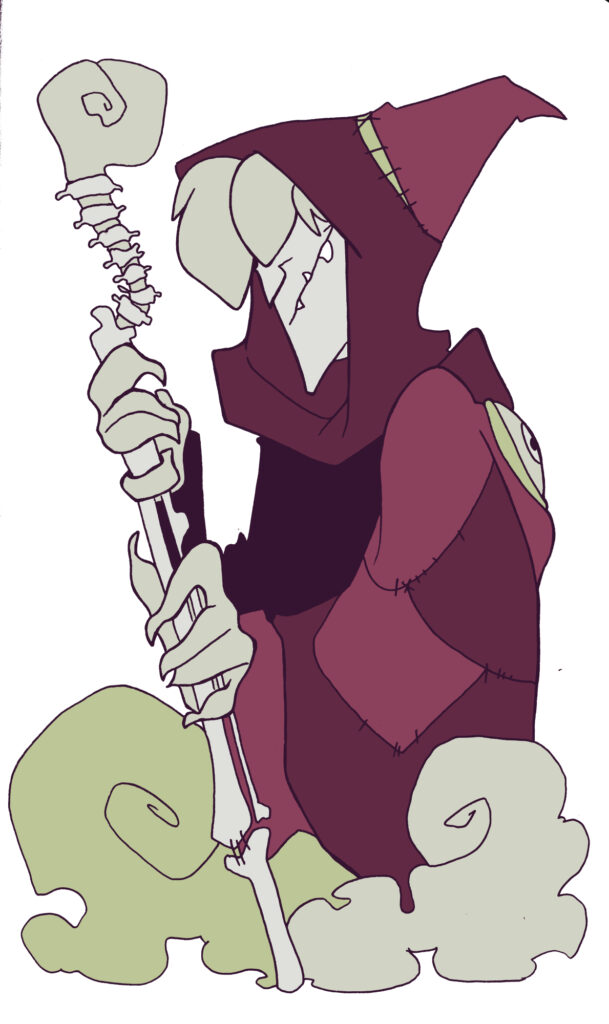
kharon
(KHARON/CHARON)
Best known for being the ferryman between the Underworld and the world of the living.
In some versions of the myth, Kharon was a character who played frequently as the backdrop to various myth and was said to roam the river Styx and Acheron, ferrying souls of the dead from the world of the living to the world of the dead (for a price).
In order to pay Kharon, the dead were often given a coin placed in their mouths before they were buried or burned so that they could pay the toll to cross the rivers. It was said that if an individual couldn’t pay the price they were stranded along the shores of the land of the living left to moan and groan for over a hundred years.
Kharon was present in various myths, aiding various heroes for this price of a single coin, heroes including: Aeneas, Herakles, Odysseus, Orpheus, Psyche, Theseus and Sisyphos.

gryphon
(GRIFFIN/GRYPHON/GRYPS/GRYPES/GRYPHUS)
Best known for being part eagle and lion.
In some versions of the myth, seeing as lions were considered king of the beasts and eagles king of the birds, Gryphons were considered quite noble beasts and were often carved as statues from precious metals for royalty. It was said these beasts protected hoards of precious stones for royals. It was also said that when Gryphons laid eggs, their nests would consist of gold nuggets as they were built under ground. While Gryphons were present and mentioned in Greek Mythology, most of their information was from later civilizations and interpretations from later religions as well as a many ancient myth cultures of a similar time period.
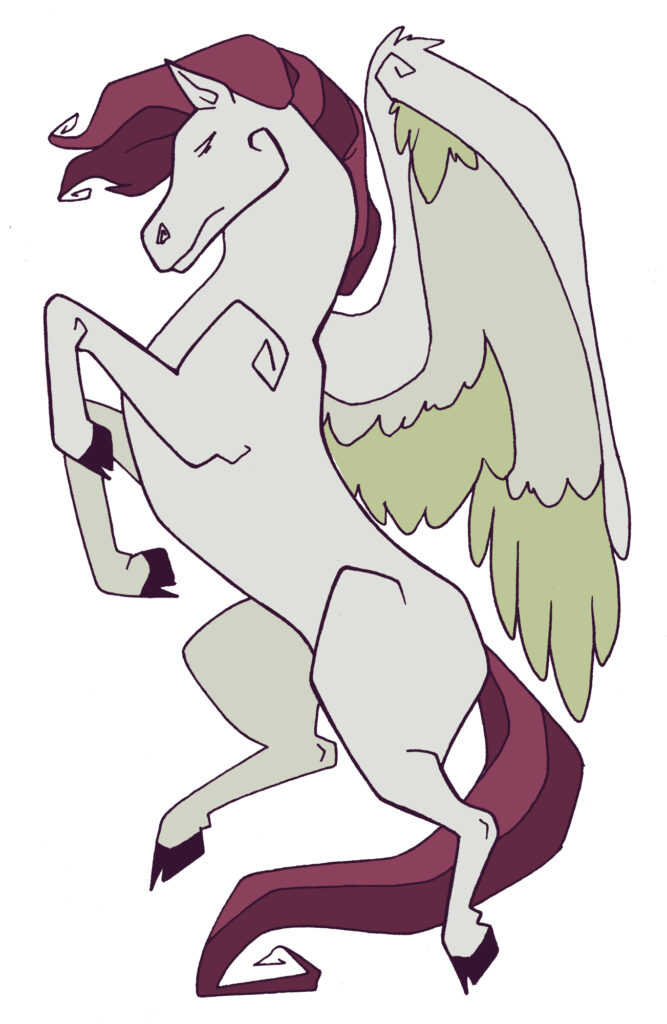
pegasos
(PEGASOS/PEGASUS)
Best known for being a gorgeous white horse with wings.
In some versions of the myth, apparently this horse was Poseidon’s child, which was not all that surprising a fact in consideration with Poseidon’s severe love of horses.
Some time much later, the hero Bellerophon was helped in taming it by Athena… and Poseidon himself so that Bellerophon could have Pegasos’ aid in order to defeat the ferocious chimera.
After this and, certainly, many other exploits, Bellerophon tried to win himself a ticket to Olympus by flying there on Pegasos’ back only to be tossed right off the horse partway there.
Pegasos was then caught by Zeus, confiscated from Bellerophon and turned into the constellation: Eponymous.
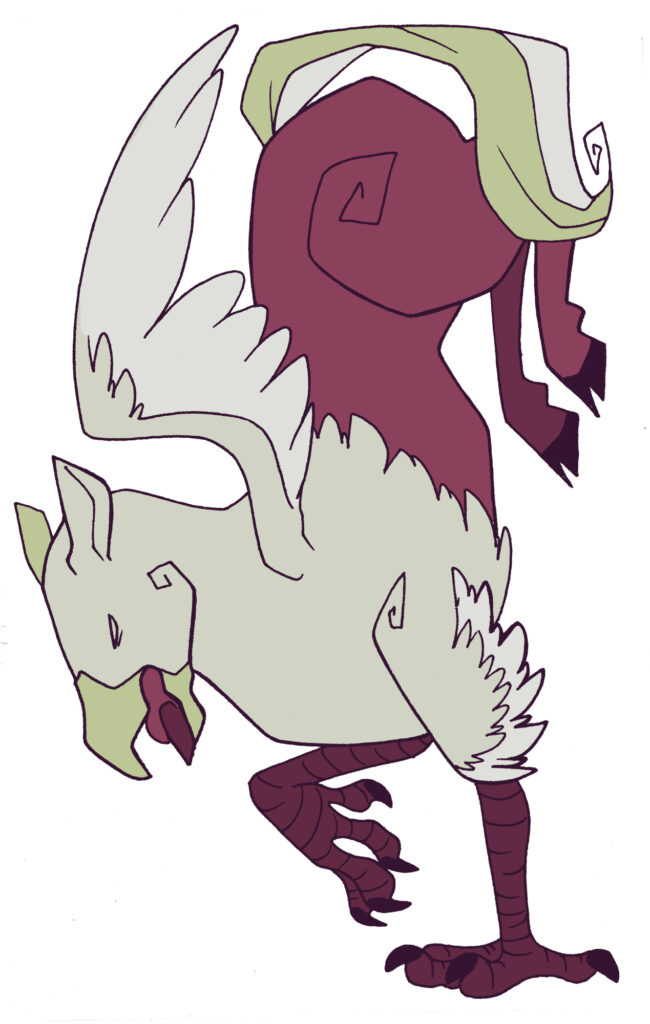
hippogryph
(HIPPOGRYPH/HIPPOGRIFF)
Best known for being part eagle and part horse.
In some versions of the myth, these creatures were said to be extremely fast and could not only fly around the world but to the moon and back! It was no wonder that Hippogryphs were Apollo’s particular favourite and were used often when depicting Apollo and/or various imagery of him.
The largest difference between Gryphons and Hippogryphs were their haunches, while both having eagle-parts, their backsides varied from lion to horse which was quite a large difference, despite the similarities in their names.
Unfortunately in the same fashion as the Gryphons, time had recycled these creatures beyond the point of their original intent which made their origins quite difficult to pinpoint.
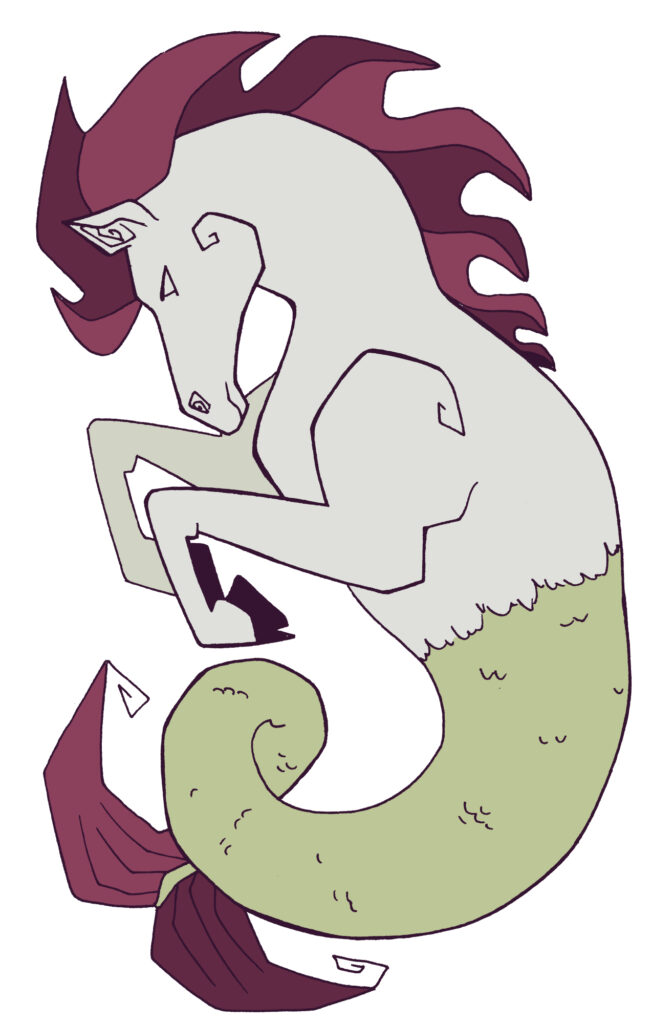
hippokamp
(HIPPOCAMP/HIPPOCAMPUS/HIPPOKAMPOI)
Best known for being half horse, half fish (like a mer-horse).
In some versions of the myth, it was to no surprise whatsoever that Poseidon owned two of these creatures for his chariot to be pulled. It was hinted that not only could these creatures swim through the sea but they could also run on land which was an interesting concept. They did not participate greatly in myth other than as a sort of trophy alongside Poseidon who was their primary master.
What is most interesting thing of this particular creature is the direct inspiration from the sea-horse animal so commonly known in present day.
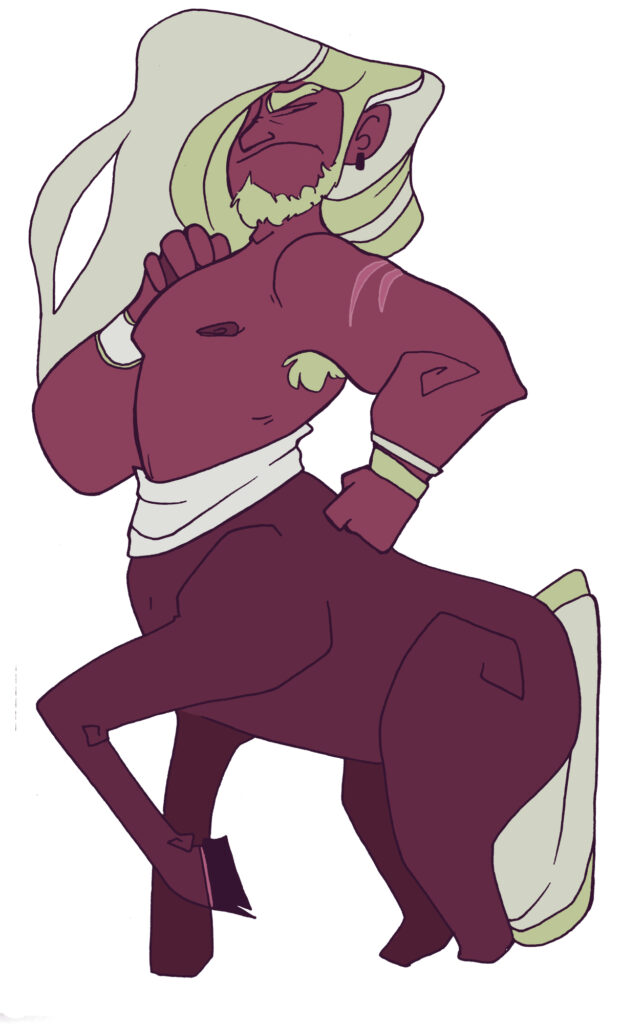
kheiron & CENTAUR
(KHEIRON/CHEIRON/CHIRON)
Best known for being the most important centaur in Greek Mythology.
In some versions of the myth, Kheiron was considered the wisest of all centaurs and was proficient in many skills like his foster-father, Apollo: medicine, music, archery, gymnastics (… even though he was half-horse…) and the art of prophecy. He was a tutor and teacher to Achilles much later on
(KENTAUROS/CENTAURUS)
Unlike Chiron, the typical view of centaurs was actually very similar to satyrs. They were loud-mouthed, pigheaded, drunk and violent creatures, bordering on barbarism. They participated in a war in which they kidnapped the women of Lapith. It so happened that Theseus was present to aid in restoring the balance between man and centaur.
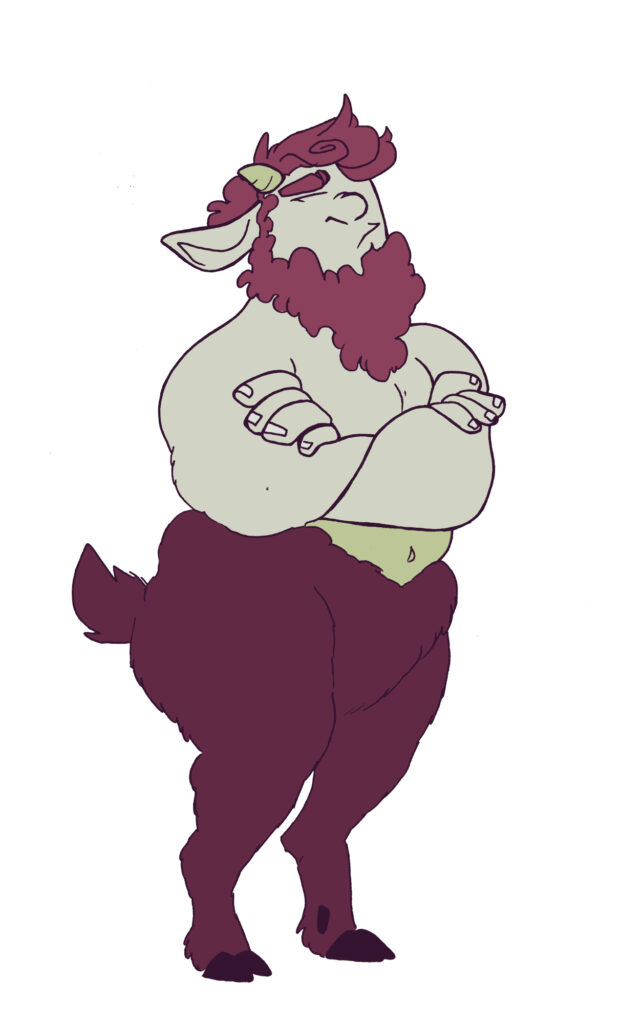
selenos
(SELENOS/SILENUS)
Best known for being Dionysos’ companion and tutor.
In some versions of the myth, it was said that Selenos was quite old and quite wise… and drunk. Selenos appeared in various myth: as the satyr that Midas entertained for five days and five nights before Dionysos found him, thanked and granted Midas’ wish; was captured by peasants who were told several of Selenos’ drunk stories; and being captured by a king.
(SATYRS/SATYROS/SILENOS)
Satyrs in general were a very drunk and rude sort and hung around Dionysos. They were never typically shone in a very respectable light as they were half-beast, rude and rather wild-tempered. While originally Selenos was and exception: described to have been the eldest of all satyrs and was usually illustrated with horse ears and the lower half of his body as a horse, time changed his appearance as more satyrs were introduced. Rather than satyrs being part horse, they were much more commonly known as half goat, half human hybrids.
MAIN PAGE | PRIMORDIALS | TITANS | GODS | HEROES | LADIES | LOVERS